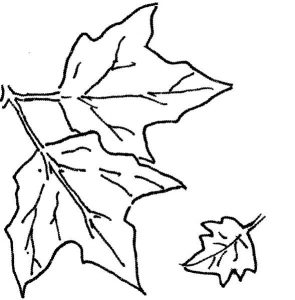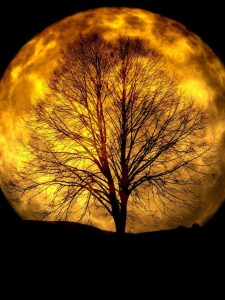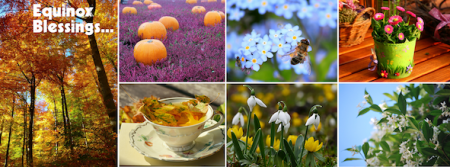Mabon : Autumn Equinox : Harvest
 The autumn equinox falls around March 20 or 21 – in 2017 it fell on March 20 – in the southern hemisphere and September 22 or 23 in the northern hemisphere – in 2017 it falls on September 22. It’s characterised by the length of day and night being equal as the sun travels across the Equator to the other hemisphere, and is the moment of balance in nature and within – a time of harmony, joy and calm. In the northern hemisphere however, today is the spring equinox.
The autumn equinox falls around March 20 or 21 – in 2017 it fell on March 20 – in the southern hemisphere and September 22 or 23 in the northern hemisphere – in 2017 it falls on September 22. It’s characterised by the length of day and night being equal as the sun travels across the Equator to the other hemisphere, and is the moment of balance in nature and within – a time of harmony, joy and calm. In the northern hemisphere however, today is the spring equinox.
Mythologically, this was when the god had aged and was declining in power, becoming a shadow deity as he prepared to leave the earth to descend to the underworld. The goddess was also ageing, absorbing the energy of the crone and wise woman. She was saddened by the impending “death” of the god, yet comforted that life was growing within her. This was also when the harvest deity Demeter had to farewell her daughter Persephone, who spent six months of each year in the underworld as the bride of Hades. She returned to him at the autumn equinox, which explained why the nights started to grow longer than the days from this point onwards – the grieving Demeter made the earth barren until her daughter’s return in the spring.
Astronomically, this is one of only two times that the length of day and night is the same, as the sun sits directly above the Equator, creating 12 hours of light and 12 hours of dark in each hemisphere. The autumn equinox represents the triumph of the dark over the light, because for the next six months, until the spring equinox, the nights will become longer than the days and the weather will get cooler.
 The autumn equinox, also known as Mabon, Alban Elued (light of the water), Harvest Home, Feast of Avalon, Festival of the Vine and Cornucopia, marks the middle of autumn. It’s a time of crisp, chilly mornings, pale skies and a world aflame with colour as the trees turn a hundred shades of red-orange-yellow-gold-brown. Daylight savings ends, the weather turns cool and things in nature slow down, turn inward and begin to wither. The leaves start to fall – hence the American reference to the season as “fall” – and farmers commence the second harvest, also known as the green or wild harvest, when fruits, vegetables and any remaining crops are brought in from the fields.
The autumn equinox, also known as Mabon, Alban Elued (light of the water), Harvest Home, Feast of Avalon, Festival of the Vine and Cornucopia, marks the middle of autumn. It’s a time of crisp, chilly mornings, pale skies and a world aflame with colour as the trees turn a hundred shades of red-orange-yellow-gold-brown. Daylight savings ends, the weather turns cool and things in nature slow down, turn inward and begin to wither. The leaves start to fall – hence the American reference to the season as “fall” – and farmers commence the second harvest, also known as the green or wild harvest, when fruits, vegetables and any remaining crops are brought in from the fields.
Vibrationally it’s a season of withdrawal, of being alone to meditate, recharge, reassess and ponder where you’re at in life. The energy of the earth retreats and goes within, as does your personal power, but from this experience you’ll emerge with immense strength and new wisdom.
This is the time of balance – the world is poised between summer and winter, and day and night are equal, which is reflected in each of us. You can ensure personal balance by acknowledging and integrating all the parts of your self and beginning to look within, echoing the path of the god, who prepares to sacrifice himself and descend to the underworld where the Mysteries will unfold. Acknowledge the things you’ve sacrificed, and others have sacrificed for you, to be where you are now. Give thanks for your metaphorical harvest, honouring your achievements, experiences and wisdom in a way that feels right to you, be it with a big celebration or a personal ritual of gratitude.
Ways to celebrate
 As the second harvest festival, Mabon continues the theme of thanksgiving for the bounty of nature that began at Lughnasadh. In the Celtic lands, Mid-Autumn was a time of celebration and rituals to give thanks for a successful crop and honour the abundance of the village. Offerings were made to the gods to implore them to provide enough food so people could survive through the winter, and feasts were held to reinforce the magic and energy of the harvest.
As the second harvest festival, Mabon continues the theme of thanksgiving for the bounty of nature that began at Lughnasadh. In the Celtic lands, Mid-Autumn was a time of celebration and rituals to give thanks for a successful crop and honour the abundance of the village. Offerings were made to the gods to implore them to provide enough food so people could survive through the winter, and feasts were held to reinforce the magic and energy of the harvest.
Corn dollies were made from the last sheaf of the crop being harvested – wheat, oats, corn, rye or barley, depending on the area – and kept inside throughout the winter to house the spirit of the grain, which they believed became homeless after the harvest, when the crops were cut down. When seeds were sown in spring these decorated stalks were returned to the earth, ploughed into the newly prepared fields to imbue them with the energy and intent of the goddess and begin the cycle of growth and rebirth again. Churches in England have also marked this day since the 1800s, when they started decorating the church with fresh local produce, singing hymns of thanksgiving, and bringing in food to be distributed to the poor.
To celebrate the season, prepare a harvest feast for friends, with earth-coloured fruits and vegetables, spices, nuts, pumpkin pie, golden grains and heavy warm breads. Decorate the table with autumn leaves, wildflowers, acorns, dried ears of corn and herbs. Wear a garland of ivy, and orange, yellow or brown clothes, and tie golden ribbons in your hair. Donate food or money to a charity that feeds the homeless or the poor in recognition that today, as in times gone by, there are still many people who struggle to survive the winter months.
In Japan, Buddhists celebrate the autumn equinox, and the three days before and after it, with a festival called Higan. Traditionally it acknowledged that the harvest was in and people had more time to contemplate their spiritual beliefs and rededicate themselves to their path. Today the week-long period also commemorates the ancestors, and is marked by cemetery visits, offerings of flowers and food, and the burning of incense to take their prayers to the heavens.
 In China, the harvest celebration is known as the Mid-Autumn or Mooncake Festival, and takes place at the harvest moon, the full moon closest to the autumn equinox. Lanterns are made and floated down rivers, and there is feasting, fire-dragon dancing, music, family reunions and the baking and eating of mooncakes. These delicacies consist of a thin pastry layer surrounding a sweeter filling inside, and often have an egg yolk cooked within to represent the harvest moon. They are embossed with Chinese characters for longevity or harmony, or decorated with pictures of the moon and other harvest images.
In China, the harvest celebration is known as the Mid-Autumn or Mooncake Festival, and takes place at the harvest moon, the full moon closest to the autumn equinox. Lanterns are made and floated down rivers, and there is feasting, fire-dragon dancing, music, family reunions and the baking and eating of mooncakes. These delicacies consist of a thin pastry layer surrounding a sweeter filling inside, and often have an egg yolk cooked within to represent the harvest moon. They are embossed with Chinese characters for longevity or harmony, or decorated with pictures of the moon and other harvest images.
The Mid-Autumn Festival celebrates the harvest, and the abundance nature offers up at this time. Apples, grapes, pomegranates and other foods are placed on altars as offerings to the harvest gods and the moon goddess, and family dinners are held, with people travelling across the country to attend this thanksgiving ritual. The harvest moon appears to be the fullest, brightest, biggest and most golden of the year. It was vital to farmers, who had to work all night to get the harvest in, as it allowed them to see by its golden light.
Another way to absorb the energy of this day of balance is to take up yoga, which will harmonise and balance you physically, emotionally, mentally and spiritually. Becoming strong in body also strengthens your mind and helps you cope with emotional storms in a calmer manner, as well as boosting your confidence and inner strength.
In your journal
 Mabon is a harvest festival, so it’s a time to honour and celebrate your achievements and feel fulfilment and pride from each one. Write about the things you’ve manifested in the six weeks since Lughnasadh, and any goals you’ve reached or lessons you’ve learned. This is also a powerful time to release what no longer serves you in order to move forward. In the wild, old growth is cleared. In your life, cut out anything that’s holding you back, draining you or preventing new life and love from flourishing, whether it’s work, a person, a belief system, a regret or an echo from the past. Many plants grow better, and produce more abundantly, if they are pruned regularly; likewise you will have
Mabon is a harvest festival, so it’s a time to honour and celebrate your achievements and feel fulfilment and pride from each one. Write about the things you’ve manifested in the six weeks since Lughnasadh, and any goals you’ve reached or lessons you’ve learned. This is also a powerful time to release what no longer serves you in order to move forward. In the wild, old growth is cleared. In your life, cut out anything that’s holding you back, draining you or preventing new life and love from flourishing, whether it’s work, a person, a belief system, a regret or an echo from the past. Many plants grow better, and produce more abundantly, if they are pruned regularly; likewise you will have
more energy and time, and be more productive, if you let go of the things or situations that are dragging you down emotionally and wearing you out. Sometimes this is as simple as saying no to requests that leave you no time for your own needs, but you may have to go deep to discover what you would benefit from cutting out of your life.
You can do an exercise to connect to the energy of Persephone, visualising yourself descending down into an underworld cavern and exploring the darkness of your psyche and unearthing the answers that are hidden within your subconscious. If it’s easier, picture yourself communicating with the goddess, and write down everything she says to you. Otherwise, converse with your higher self and open up to the wisdom you already hold within. Some people use this ritual to unravel mother-daughter issues, since Persephone and her mother Demeter were so entwined, but it is also effective for uncovering any hidden concerns and finding answers to the secret yearnings of your heart.
The equinox is also about balance, and ensuring harmony in your life by maintaining your emotional and physical health, and integrating all the parts of your deeper self. Consider whether you’re spending enough time relaxing, expressing your spirituality, being with friends and on your own. Are you getting enough sleep, exercise, nutrition or down time? Your physical wellbeing is crucial to your emotional and spiritual health, which in turn affects your vitality and energy levels. It’s all about balance, and while the energies of the earth are in alignment, it’s a good time to weigh up how balanced you are, and take steps to even the scales if you’re out of whack in any area.
It’s also a powerful time to heal rifts, resolve arguments and seek harmony in your life. Whether the other person is ready to work on the issue isn’t important – finding resolution and forgiving those involved, including yourself, within your own heart can bring immense personal healing, make you feel lighter, happier and stronger, and help you move forward with grace and wisdom.
It’s a good time to explore your shadow side too, and bring any perceived darkness out into the light to be balanced and illuminated. Suppressing anger or stewing on a problem can blow it out of proportion, so journal about your issues or fears to release the intensity and allow space for lightness and resolution to emerge. Acknowledge and respect your so-called negative emotions, for you have a right to them, and as long as you don’t drown or wallow in them, they can be a powerful catalyst for change. Experiencing and expressing anger doesn’t make you a bad person. Life is all about balance – being a healer and nurturer when needed, but allowing yourself to go into battle and fight injustice when necessary. Expressing anger constructively is far better, and healthier, than suppressing it, and finding your own power is about embracing every part of yourself – the light and the dark, the healer and the warrior, the sweet and the strong.
As the shadows lengthen, it’s also a good time to scry if you want insight into your future. If you can, light a fire and stare into the flames, allowing your mind to go blank and your vision to blur a little. Note any images you see. Or go outside and watch the clouds scuttling across the sky and analyse the shapes you see within them. Without thinking about it too much, write down what they mean to you.
Pyromancy (fire reading) and nephomancy (cloud reading) are forms of divination that have been used for millennia. You should develop your own dictionary of symbols through regular practise, because you know better than anyone else what each symbol means to you, but you can begin with standard readings, such as a heart indicating new romance, a cat referring to the need to trust your intuition, a tree meaning you’ll make new friends and a plane foreshadowing travel. You can also use oracle cards or any other form of divination, tapping in to your intuitive powers in the most effective way you know how, and letting the truths of your heart and soul reveal themselves to you.



Get Social